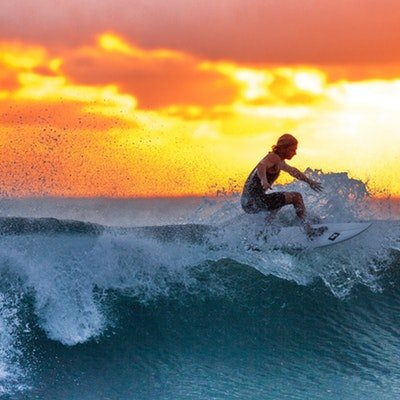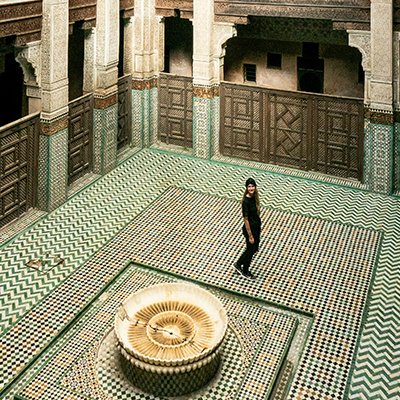Seeing Borneo’s wildlife in their natural habitat may not be for everyone, considering the lengths to which you have to go: gumboots for the muddy jungle treks where vines have a habit of tripping you up, leech socks to prevent vampirish wriggly creatures latching onto you, and dousing yourself in insect repellent to ward off the buzzing winged hordes. Or, if on a boat on the Kinabatangan River—you won't need leech socks—but you will need to smother yourself in sunscreen and wear a hat which sometimes prevents you from seeing that low-hung branch about to knock your head off when the boat inches close to the muddy crocodile infested bank and your rear-end is crying out for some relief from the wooden seat. For the fearless tourist, this is heaven. But, for a delicate traveling soul, it's a sweaty, tortuous, never-ending search to glimpse sometimes shy creatures.
The alternative to heading out and pitting yourself against the wild elements is to stay in Sandakan on the northeast coast of Borneo and visit the iconic animals comfortably and predominantly at your leisure. Well, almost on your own time frame, as the best hours are the feeding times when busloads of tourists congregate at the sanctuaries. My advice is to check out the feeding times on the sanctuaries' websites and aim to arrive at least half an hour before the listed feeding time. You will have the space to yourself and the opportunity to command a front-row position for taking photographs. Always carry water with you, and if you feel the heat, add one of those cheap handheld fans to your day pack—they stop sweat dripping into your eyes!
The Labuk Bay Proboscis Monkey Sanctuary is a privately owned affair that, in their words, is 'protecting the biggest noses in Borneo.' Located approximately 38 km from Sandakan in a mangrove forest surrounded by an oil plantation, the sanctuary sits on the coastline near Samawang Village. Walking along the boardwalk, you may have an escort, as I did—a large male proboscis monkey—it was as if he was showing me the way to the viewing pavilion. When he decided to sit in contemplative mode, I quickly ducked around to get in front of him; I was unsure of his intentions. The protected monkeys here are unlike their wild relatives as they are used to human interaction and rely on food handouts to supplement their natural diets—think freshly baked pancakes! Proboscis monkeys are definite winners of the ugly competition. Still, they will win your heart with their over-the-top antics and maybe embarrassed laughter with randy acts worthy of a major porn film. The females are attracted to the Alpha males' big noses and bulging bellies. The males are typical for their gender in that they love to show off with a look-at-me attitude after bounding through the viewing pavilion on all fours.
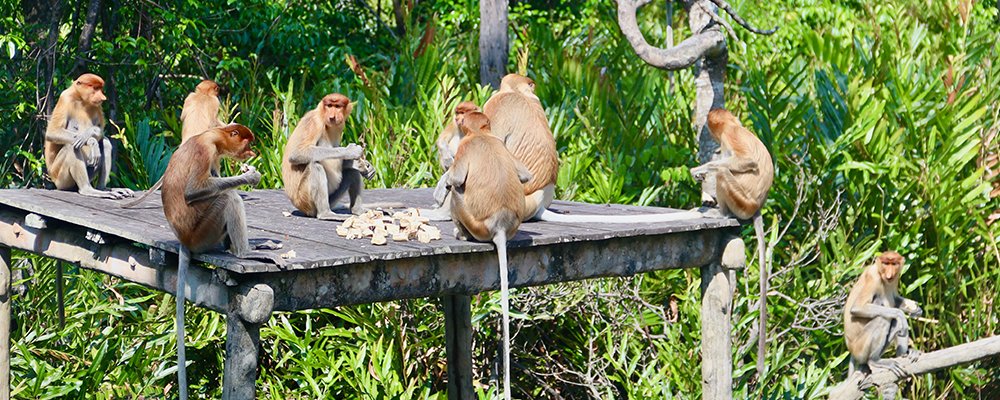
The Bornean Sun Bear Conservation Centre is beside the Sepilok Orangutan Sanctuary. It's a rescue, rehabilitation, and research hub for the world's smallest bear, the Sun Bear, which is only found in South-East Asia. Also known as 'honey bears' because of their propensity to stick their long tongues into the honey of bee hives, they are the second-rarest bear—the giant panda being the rarest. Sun bears are threatened by forest degradation, poaching young cubs for pets, and illegal hunting for their body parts considered an expensive delicacy or used in folk medicine. All of the bears have been named, and you can distinguish who is who from the distinctive pale horseshoe markings on their chests that appear like a rising or setting sun. No two bears have the same marking. This facility is home to approximately 44 rescued bears, giving them a natural environment of large forested enclosures to roam around. They could be considered the health keepers of the forest because of their natural behavior of spreading seeds, devouring termites, tilling the forest's floor as they dig for spiders, worms, and snails, as well as creating nesting sites for various creatures when they tear open tree trunks looking for honey. Cute and cuddly looking with their thick, dense black fur, it's easy to spend hours watching from a purpose-built wooden walkway on high stilts as they sniff and dig around the ground or climb the tall trees.
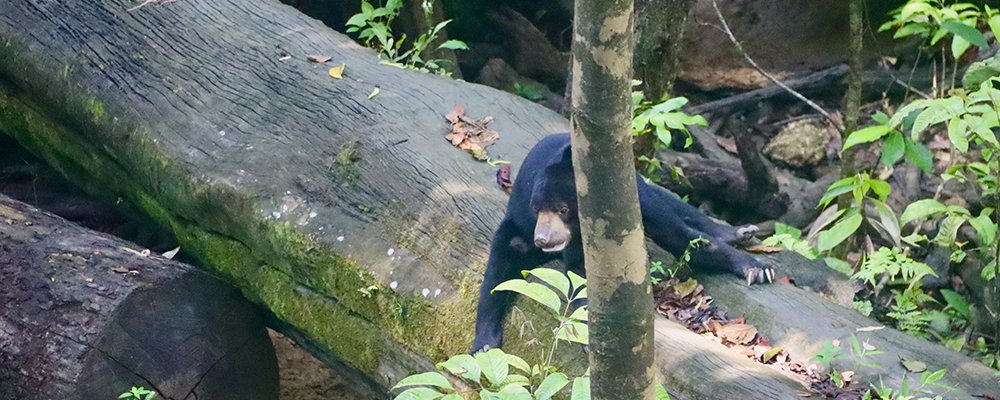
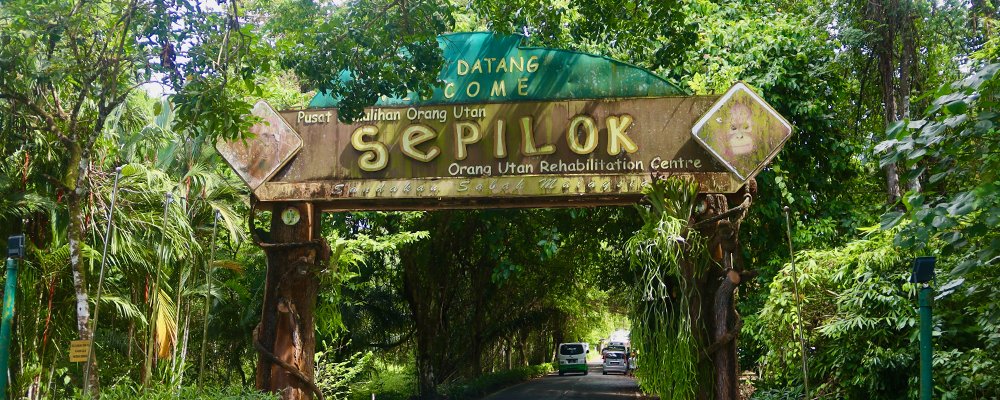
Sepilok Orangutan Sanctuary - One of only four orangutan rehabilitation facilities in the world, Sepilok Orangutan Sanctuary was established in 1964 to help orphaned, rescued, or injured Bornean orangutans. Since opening, over 100 orangutans have been released back into the surrounding wild jungle. Set in the Kabili-Sepilok Forest Reserve, much of the land is virgin rainforest. The grounds are their natural habitat, apart from the feeding platform where the creatures congregate as if having a family dinner. There's a separate enclosed nursery where the young orphans learn to climb, swing on ropes, and socialize with their peers—in a crazy rumble and tumble of play fighting. It takes years of learning for their future in the jungle canopy. Known as the 'man of the forest' or by their nickname 'the gardeners of the forest,' these brilliant creatures have long, powerful arms, hands, and feet for grasping as they swing through trees. Who shows up for feeding time depends on who is hungry and if it's raining. During the months when there's plenty of fruit on the trees, none will arrive as they have plenty of food in the forest. But when their natural food source is scarce, the feeding platform is created for a Disney movie—all the wild cousins and relatives join in on a feeding frenzy, including a dominant large male wearing a carpet cloak of red hair, who doesn't like people watching him eat. Their behavior traits are human—orangutans share about 97% of their DNA with us and are as intelligent as a three- or four-year-old child.
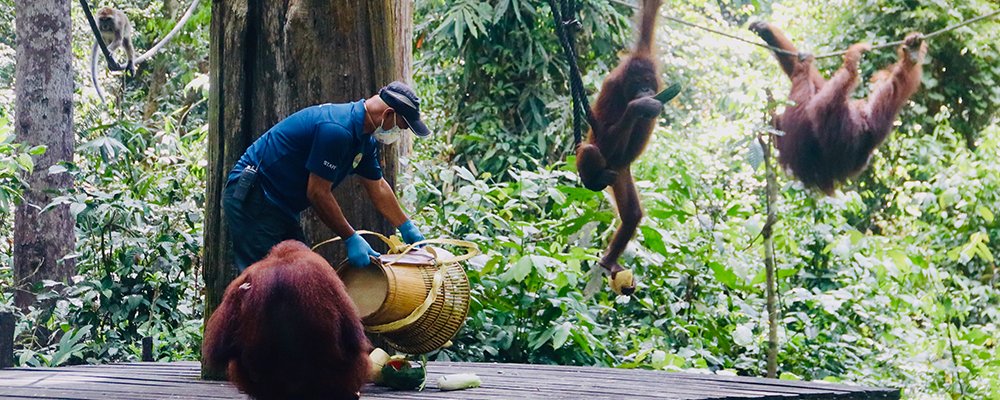
Even if you plan on going to a jungle lodge while in Borneo, it’s well worth visiting the animal refuges for an up close and personal experience that you won’t have in the wild.
Gail Palethorpe, a self proclaimed Australian gypsy, is a freelance writer, photographer and eternal traveller. Check out her website Gail Palethorpe Photography and her Shutterstock profile.



